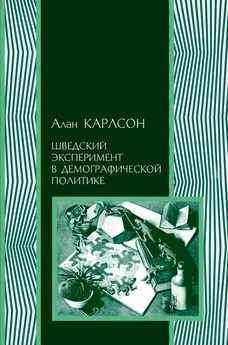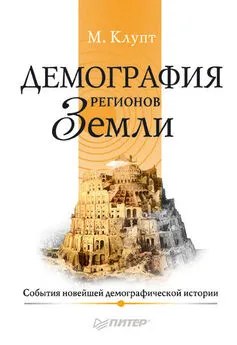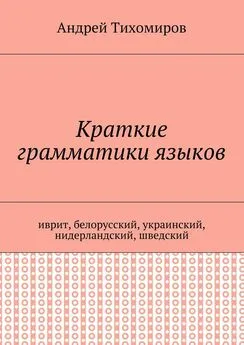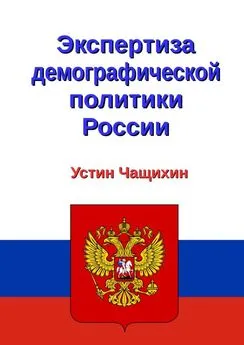Алан Карлсон - Шведский эксперимент в демографической политике
- Название:Шведский эксперимент в демографической политике
- Автор:
- Жанр:
- Издательство:неизвестно
- Год:неизвестен
- ISBN:978-5-91603-572-8
- Рейтинг:
- Избранное:Добавить в избранное
-
Отзывы:
-
Ваша оценка:
Алан Карлсон - Шведский эксперимент в демографической политике краткое содержание
Шведский эксперимент в демографической политике - читать онлайн бесплатно ознакомительный отрывок
Интервал:
Закладка:
8
См.: Max Von Gruber, Ursachen und Bekampfung des Geburtenrückgangs im Deutschen Reich (Munich: J. F. Lehmann Verlag, 1914), pp. 1–6, 55–69, 73–76; Fritz [Friedrich] Burgdörfer, Das Bevölkerungsproblem: Seine Erfassung durch Familien Statistik und Familienpolitik: Mit besonders Berücksichtigung der Deutschen Reformplane und der Französischen Leistungen (Munich: Verlag von A. Buchholz, 1917), pp. v – x, 1—46; Roderich von Ungern-Sternberg, “Die Ursachen des Geburtenrückgangs im Welteuropäischen Kulturkris wahrend des 19. und 20. Jahrhunderts,“ Archiv für befölkerungswissenschaft und befölkerungspolitik 8 (January 1939): 1—19; Fernand Boverat, L’Effrondrement de la natalite (Paris: Alliance nationale contra la depopulation, 1935); V. M. Palmieri, Denatalita (Milan: S. P. E. M., 1937).
9
Во Франции страхи перед депопуляцией страны породили обширную литературу. См.: Jacques Bertillon, La depopulation de la France (Paris: F. Alcan, 1911); Joseph J. Spengler, France Faces Depopulation (Durham, N. C.: Duke University Press, 1938); Robert Talmy, Histoire du Mouvement familial en France, 1896–1939 , Vols. 1, 2 (Paris: Union Nationale des Caisses d’Allocations Familiales, 1962); Jean Pinte, Les Allocations familiales – Origines regime legal (Paris: Librarie de Recueil Sirey, 1935). О ситуации в Бельгии см.: E. Dembour, La Questtion de la population (Brussels: Ligue des Familles Nombreuses de Belgique, 1933); Valere Fallon, Famille et population (Tournoi: Casterman, 1942).
10
См.: Benito Mussolini, La politica demografica (Rome: Pinciana, 1937); Filippo Robatti, Il Problems demografico sul piano del l’impero (Torino: La Stella di San Domenico, 1937); Orazio di Marco, La legislazione fascista per l’incremento demografico e l’assistenza sociale (Campobasso: DiNunzio e Santorelli, 1938).
11
См.: Max Reuscher, Der Kampf gegen den Geburtenrückgang früher und heute (Stettin: Ostsee-Druckerei und Verlag, 1935); Siegfried Boschan, Nationalsozialistische Rassen— und Familiengesetzgebung, praktische Rechtsanwendung und Auswirkungen auf Rechtspflege Verwatung und Wirtschaft (Berlin: Deutscher Rechtsverlag, 1937); Elisabeth Nutt, Die Bevölkerungspolitische Auswirkungen des Ehestandsdarlehen (Berlin: Pfau, 1940); Frank H. Hankins, “German Policies for Increasing Births,” American Journal of Sociology 42 (March 1937): 630—52.
12
James Marchant, Birth Rate and Empire (London: Williams and Norgate, 1917); National Council on Public Morals, National Birth Rate Commission, The Declining Birth Rate: Its National and International Significance (London: Chapman and Hall, 1916); W. C. D. and C. D. Whetkam, “The Extinction of the Upper Classes,” Nineteenth Century (July 1909): 97—108); R. B. Catell, The Fight of Our National Intelligence (London: D. S. King and Son, 1937).
13
C. D. H. Cole, The Next Ten Years in British Social and Economic Policy (London: Macmillan, 1929), pp. 183–199; Eleanor F. Rathbone, The Case for Family Allowances (Harmondsworth: Penguin Books, 1940).
14
Лучшим обзором межвоенного движения за повышение рождаемости остается классическая работа Д. В. Гласса: D. V. Glass, Population Policies and Movements in Europe (Oxford: Clarendon Press, 1940).
15
О кризисе рождаемости в Британском содружестве наций см.: A. E. Mauder, Alarming Australia (Sydney, London: Angus and Robertson, 1939); H. I. Sinclair, Population: New Zealand’s Problem (Dunedin: Gordon and Gotch, 1944); A. N. MacKenzie, “Problems of Population and Persons,” Canadian Defense Quarterly 14 (October 1937): 84–92. В Соединенных Штатах тон в дебатах задавали поклонники евгеники. См.: Henry Pratt Fairchild, People: The Quantity and Quality of Population (New York: Henry Holt, 1938); Ernest Kulka, The Causes of the Declining Birth Rate (Cold Harbor, N. Y.: Eugenics Research Association, 1932); J. C. Litzenberg, “Presidential Address: Challenge of the Falling Birthrate,” American Journal of Obstetrics and Gynecology 27 (March 1934): 317—29; Joseph J. Spengler, “Population Policy in the United States: The Larger Crisis in American Culture,” Vital Speeches (1 January 1941).
16
Самым известным обзором этой темы является Eli F. Heckscher, Svenskt arbete och liv. Från medeltiden till nutiden (Stockholm: Albert Bonniers Förlag, 1941). О демографических изменениях см. в особенности с. 171–184, 240ff., и 362–364. Существует английский перевод: An Economic History of Sweden (Cambridge: M. I. T Press, 1954). См. также: Karin Koch, “Nymalthusianismens genombrott i Sverige,” Studier i ekonomin och historia till agnade Eli F. Heckscher på 65-årsdagen den 29 november 1944 (Uppsala: Almqvist and Wiksell, 1945), pp. 79–80; Carl-Erik Quensel, “Landbygdens avfolkning och fl ykten från jordbruket,” Ekonomisk tidskrift 42 (September 1940): 137–154; Erland von Hofsten, Hur den svenska landsbygden avfolkas (Stockholm: Albert Bonniers Förlag, 1940).
17
См.: Jane Moore, Cityward Migration: Swedish Data (Chicago: University of Chicago Press, 1938); Staff of the Institute for Social Science at Stockholm University, Population Movements and Industrialization, Swedish Counties , 1895–1930 (Stockholm: Norstedt, 1941); Gösta Ahlberg, Befolkningsutvecklingen och urbaniseringen i Sverige, 1911–1950 (Stockholm: Stockholms Kommunalförvaltning, 1953).
18
См.: Florence Edith Janson, The Background of Swedish Immigration, 1840–1930 (Chicago: University of Chicago Press, 1931); A. Friedrich, “Schwedens Geburtenmangel und Auswandererschwund,” Archiv für Wanderungswesen und Auslandkunde 1 (Autumn 1942): 93–96.
19
Литература о демографической ситуации в Швеции очень обширна. В дополнение к указанным выше источникам см. также: Ernst J. Hoijer, Svensk befolkningsutveckling genom tiderna (Stockholm: Svenska Bokförlaget, 1959); Gustav Sundbärg, Bevolkerungsstatistik Schwedens, 1750–1900, Einige hauptresultate (Stockholm: P. A. Norstedt och Söner, 1907); Erland Hofsten and Hans Lundstrom, Swedish Population History: Main Trends from 1750 to 1970 (Stockholm: National Central Bureau of Statistics, 1976); Statistiska Centralbyrån, Historisk statistik för Sverige. Part II: Befolkning andra upplagen, 1729–1967 (Stockholm: Statistiska centralbyran,1969); Eva Bernhardt, Trends and Variations in Swedish Fertility: A Cohort Study (Stockholm: Statistiska centralbyrån, 1971); Sven Wicksell, Ur befolkningsläran (Stockholm: Albert Bonniers Förlag, 1931), особенно pp. 13–58; Norman B. Ryder, “The Infl uence of Declining Mortality on Swedish Reproductivity,” Current Research in Human Fertility (New York: Milbank Memorial Fund, 1955), pp. 65–81; Carl Erik Quensel, Den äktenskapliga fruktsamheten i Sveriges städer 1911–1953 efter äktenskapets varaktighet och hustruns alder (Lund: Statistiska Institutionen, 1956).
20
Gerhard Magnusson, цит. по: Florence Edith Janson, The Background of Swedish Immigration, 1840–1930 (1934; New York: Arno Press and the New York Times, 1970), p. 434. *Имеется в виду Mission Covenant Church of Sweden, т. е. Шведская церковь Миссия Завета. – Прим. перев.
21
Имеется в виду Mission Covenant Church of Sweden, т. е. Шведская церковь Миссия Завета. – Прим. перев.
22
Известен также как Великая ложа Скандинавии и др. – Прим. перев .
23
Janson, The Background of Swedish Immigration , pp. 208–209, 219.
24
Sven Lundkvist, Folkrörelserna i det svenska samhället, 1850–1920 (Stockholm: Almquist and Wiksell, 1977).
25
Ibid., p. 299; Sven Lundkvist, “Popular Movements and Reforms, 1900–1920,” in Steven Koblik, ed., Sweden’s Development from Poverty to Affluence, 1750–1970 (Minneapolis: University of Minnesota Press, 1975), pp. 180–193.
26
Janson, The Background of Swedish Immigration , pp. 213–219; Göran Gustafsson, Religionen i Sverige: Ett sociologiskt perspektiv (Stockholm: Norstedts Tryckeri, 1981), p. 41.
27
См.: Ingrid Eriksson and John Rogers, Rural Labor and Population Change: Social and Demographic Development in East-Central Sweden During the Nineteenth Century (Stockholm: Almqvist and Wiksell, 1978), pp. 161–166.
28
Ibid., pp. 161–171.
29
Только в Австрии рождаемость падала быстрее, чем в Швеции, но Австрия в полной мере испытала военную и послевоенную разруху и «потерю целеустремленности», так что это особый случай. См.: Ivar Iverus, Versuch einer Darstellung der Zusammenhanges Zwischen Bevölkerungsentwicklung, Familienpolitik und öffentlichen meinung in Sweden (Helsinkikir: Japaino o. y. Sana, 1953), pp. 20–21.
30
См.: Karin Koch, “Nymalthusianismens genombrotti i Sverige,” Studier in ekonomie och historia tillägnade Eli F. Heckscher på årsdagen den 24 November 1944 (Uppsala: Almqvist and Wiksell, 1945), pp. 84–88.
31
Термин неомальтузианство , введенный в 1879 г. вице-президентом Международного мальтузианского союза С. ван Хутоном, выражал веру в способность человеческого разума поставить рождаемость под контроль с помощью противозачаточных средств. См.: D. V. Glass, Population Policies and Movements in Europe (Oxford: Clarendon Press, 1940), note IAA, p. 425, and pp. 30–46. См. также: F. H. Amphlett Micklewright, “The Rise and Decline of English Malthusianism,” Population Studies 15, no. 1 (1961–1962): 32–51.
32
Torsten Gardlund, Knut Wicksell: Rebell i det nya riket (Stockholm: Albert Bonniers Förlag, 1956), p. 46; также см.: Koch, “Nymalthusianismens genombrott i Sverige,” p. 84. В число основных работ Каутского входят: Der Einfl uss der Volksmehrung auf der Fortschritt der Gesellschaft (Vienna: Boch and Harbuck, 1880) и Vermehrung und Entwicklung (Stuttgart: J. H. Dietz Nachf, 1910).
Читать дальшеИнтервал:
Закладка:










